Vest-Tur Central Asia Travel company
Main menu:
Ferghana Valley
Uzbekistan Sight
Fergana valley
Fergana Valley, 300 km lengthwise and 100km across, lies between mountain ridges of Tien Shan (in the northwest) and Alay (in the southeast) at the eastern part of Uzbekistan bordering on Kyrgyzstan (north and east) and Tajikistan (south). Three provinces of Uzbekistan are there: Fergana, Namangan and Andijan provinces.
Central Asias first long and second deep river Syrdariya (nearly 3000km) runs through this valley making it an agricultural paradise: nearly everything except tropical fruits is grown there.
As long as 4 thousand years back, the valley already was agriculturally well developed. They grew pomegranates, grapes, figs, walnuts, rice, wheat and clever that Chinese got knowledge of only in the 2nd c BC and only due to their contacts with Fergana.
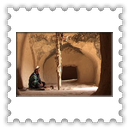
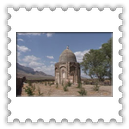
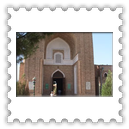
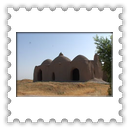

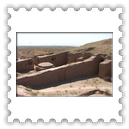
First ever Chinese to reach Fergana (Parkana by Persian and Davan by Chinese chronicles) Kingdom was Zang Qian - ambassador of Emperor Wudi of Han dynasty. Ferganas "celestial horses" then became item of great interest to the Emperor and are believed to be forbearers of todays world famous Ahalteke and Arabic breeds of horses.
Zang Qian reported on Davan as a country of 70 towns the largest of which was more than 40 hectares big.
Because of its favourable geographic location, climate and intensive caravan trade along the Great Silk Route, Fergana of medieval times was playing important role in economical, political and cultural life of the region.
In the IX-X c.c. AD Ahsiket was a capital of Samanids Fergana with its highly developed markets and industries including iron foundries, steel making and metal processing workshops. Ahsiket minted its own coins that were in circulation even beyond Fergana valley.
Native of this land, medieval astronomer Ahmed al-Fergani as early as in the 8th c AD moved the original premise of Heliocentricity of our Solar System.
Great statesman, poet and historian of the 15th-16th cc Zahiriddin Bobur was born there in Andijan and is regarded as a founder of the Great Mogul Empire of India.
At the end of the 17th c. after collapse of Ashtarhanid dynasty of rulers of Mavarounnahr new independent state emerged in Fergana Valley the Kokand Khanate, with capital in Kokand. The Khanate was constantly expending and by the end of XIX c. has seized enormous territory comprising the territory of todays Kyrgyzstan and south-east Kazakhstan, the Tashkent oasis and flat parts of Tajikistan. The Khanate cessed to exist in 1876 after having been suppressed by Russian Empire.
Today Fergana valley plays important part in the economical and cultural life of Uzbekistan. It is most populous region of the country where its 500 persons per hectare density of population 10 times exceeds Uzbekistans average one. Best in Uzbekistan apples, melons, watermelons and figs are grown there, best handmade silks, knives, ceramics and best Uzbek cars are manufactured there in Fergana Valley.
Kokand is a former capital of once powerful Kokand Khanate (XVII-XIX c.c.). The original design and patterns of mosaic can bee seen at the Hudoyarhan Palace (1871) built by last Kokand khan, the palace now houses local history museum. Also of tourist interest are Norbuta-bey madrasah (1799), Juma mosque (1800) and Modarihon mausoleum (1825).
Margilan is a small but old town nearby Fergana that is due to celebrate its 2000 anniversary. Since 10th c. AD, this town was made a centre of silk production.
The Central Asias only factory producing handmade silks (khan-atlas, adras, shoi etc.) is there and is really worth visiting. Tourists there can see whole process of making silks - from cocoon unwinding to finished fabrics - and buy themselves original souvenirs.
Also of interests are Margilans Pir Siddik memorial complex (also known as Kaptarlik, 1742), Khoja Maghiz mausoleum, Chakar mosque and Seid Ahmad Khoja madrasah.
Andijan is a mother town of Zahiritdin Bobur - founder of the Great Mogul dynasty of kings of India that ruled over India for more than 400 years. The town suffered a lot of earthquakes and that is why not that much of its original architecture preserved to our days. Presently there is a memorial Bobur Park with Museum of History, Fergana valleys most big Juma mosque (XIX c.) and the Ghumbaz madrasah (XIX) there.
Shahimardan ("Master of people") is truly one of the most beautiful places in Uzbekistan located 55 km southwards from Ferganz town at the altitude of 1500m above sea level amidst mountains of the Alay Range. The name is connected to the name of Hazrat-Ali - fourth caliph after Prophet Mukhammad and his son-in-law whose grave is believed to be there in Shahimardan.
In the vicinity of Shahimardan at the altitude of 1724m there is a nice alpine lake called Kurban-Kul also known as Blue Lake. 2000m long chair lift connects the town to the lake. Shahimardan and the Blue Lake are popular destinations for tourists and religion pilgrims.
Rishtan is a small town located halfway from Kokand to Fergana and famed by its dynasties of hereditary ceramists. The town gives a visitor brilliant opportunity to see ceramic workshops, to see masters making their produce and to buy souvenirs from them.